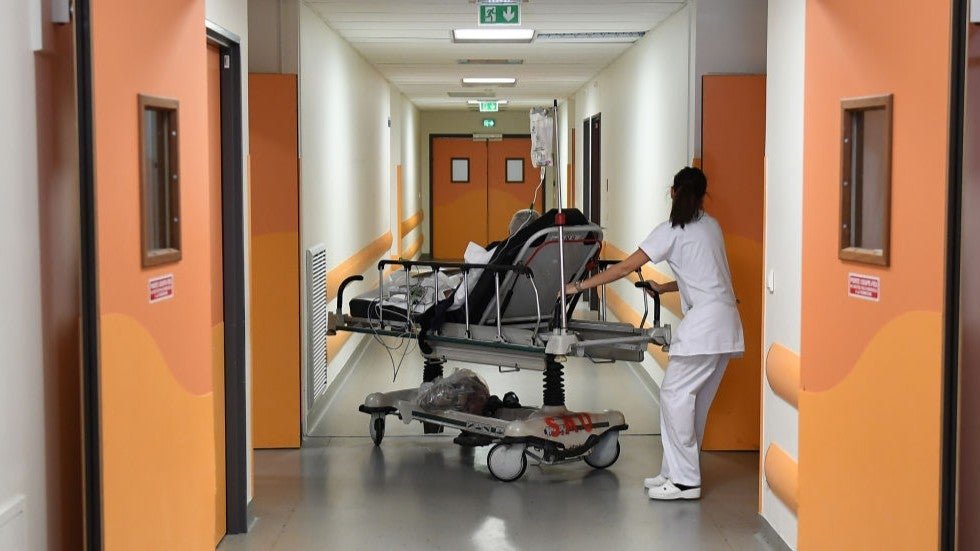To save our healthcare system, we must think beyond doctors and nurses | TheHill – The Hill
© 1998-2021 Nexstar Media Inc.
All Rights Reserved
Even before the COVID-19 pandemic, the medical community was grappling with a troubling epidemic among its ranks: career burnout. The added stress, trauma and mass death of the past two years merely pushed our entire industry to the breaking point. Nearly one in five health care workers quit their jobs during the pandemic, while another 12 percent were laid off. (Among those who kept their jobs, nearly a third of them have considered leaving.)
Though doctors and nurses get much of the attention on this national problem, they make up only about 20 percent of the industry’s workers. A large percentage of those in healthcare are direct service workers, which include nurse assistants, home health aides and personal care aides. Direct service workers — of which there are more than 4 million in the U.S — care for the most vulnerable in our society. They may not be as visible as nurses and doctors, but they are a critical pillar of the system.
Our recent research with the Maryland Regional Direct Services Collaborative reveals that this vital sector (one that was broken prior to COVID-19) is now on the verge of total collapse.
This should not come as a surprise. Direct service workers are among the least paid and least protected of those in the health care industry. They are also, overwhelmingly, some of our most marginalized citizens. According to our research, the majority of direct service workers in the D.C. region are women (88 percent) people of color (88 percent) and immigrants, with 32 percent having been born outside of the U.S. This means issues of inequality along racial, gender and class lines are compounded and magnified for these workers.
A 2018 study shows that, as a direct result of low pay and protections, nearly one in five direct service workers in Washington, D.C. and more than one in 10 in Maryland live in poverty. Plus, 63 percent of workers in D.C. and 43 percent in Maryland rely on some form of public assistance. At least one in 10 direct services workers in Maryland (16 percent) and D.C. (10 percent) — who have cared for patients with infectious diseases like COVID-19 — lack health insurance. In some parts of the region, more than a third of the workforce with health insurance relies on Medicaid, Medicare or another form of public coverage.
Given their low pay, lack of job protections, long work hours, workforce shortages, lack of sufficient personal protective equipment, fear of exposure to COVID-19 infection and lack of accessible childcare — to name a few — is it any surprise that legions of these caregivers have simply said, “Enough” and walked away?
This workforce shortage is causing a literal human toll — for the remaining workers who have to do less with more, but also for our most vulnerable, medically underserved populations. The people who need direct services include the elderly, people with chronic health conditions and/or disabilities, and children who need specialized care — all of whom may now find their care compromised. In addition, the families of these patients are likely to suffer, having to pay much higher rates for scarce care or even take time off their own jobs — or quit altogether — to care for an ailing family member.
A direct service workforce shortage also has a knock-on effect throughout healthcare. A lack of direct services causes people to use emergency services instead, which puts even further strain on ERs and hospitals. Moreover, the population in the D.C. region — like much of the country — is rapidly growing older, which is driving up demand for long-term services and supports. As a result, we risk a total collapse of the system if we fail to act.
We cannot heal a mortal wound with Band-Aids. We cannot continue to tolerate a system where direct service workers struggle to make ends meet; where both direct service workers and the loved ones of vulnerable patients choose between educating their child and caring for the sick; where grandma dies prematurely of a preventable ailment due to lack of care. Real, structural changes need to be made.
That means inviting direct service workers to the table with policymakers and other stakeholders as we negotiate a new vision for our healthcare system — one that is more resilient and less strained. Our lower-wage, high-risk workers shouldn’t be seen as cogs in a vast and uncaring system. We must recreate a truly equitable system that values all health care workers, from the bottom up.
The COVID-19 vaccine development and mass mobilization effort show that we are capable of solving very difficult problems and accomplishing great things through collective will and action. Now is the time to reimagine a system that respects the inherent value of every professional, which will ensure our most vulnerable patients continue to receive considerate, equitable care. Such reforms will — in the end — truly save lives.
Jehan “Gigi” El-Bayoumi is the founder of the Rodham Institute at George Washington University.
View the discussion thread.
The Hill 1625 K Street, NW Suite 900 Washington DC 20006 | 202-628-8500 tel | 202-628-8503 fax
The contents of this site are © 1998 – 2021 Nexstar Media Inc. | All Rights Reserved.




